- Home
- Thomas Keneally
Australians, Volume 3 Page 8
Australians, Volume 3 Read online
Page 8
The year before Taylor’s departure, the Queensland government received the report of three commissioners appointed to address the ‘urgent problem’ of Queensland’s empty north. They declared that northern Queensland did not give any hope for ‘grandiose settlement schemes’. Greeks were settled there, declared chairman of the commissioners Thomas Ferry, but they were not the kind who should be encouraged, given that they merely ran cafés and boarding houses and even less satisfactory places. As a home for Britons and British Australians, north Queensland would not serve.
Even as Taylor left Sydney by steamer, the victim of Australian demographic hopes, people still believed that Australia would support at least one hundred million people if only the Centre and north were ‘opened up’. It became a national obsessional pastime to dream of solutions to the dryness of the interior. Ion Idriess, a Gallipoli veteran, Light Horseman and prolific writer, proposed that water should be conveyed by tunnels from the eastern side of the Great Dividing Range in Queensland and into the river system that ended in Lake Eyre. John Bradfield, the civil engineer who designed and built the Harbour Bridge in Sydney, agreed with this project. In 1938, he proposed a hydro scheme to the Queensland premier, Scots-born Forgan Smith, a believer in large public works. The plan would use the massive water supply from the coastal rivers by way of water tunnels and was capable, Bradfield claimed, of covering 80 square kilometres to a depth of twenty metres. Though the scheme would cost £30 million, Bradfield said the outlay could be recovered in water rates. Dealing in their various ways with the Depression, and the economic restraint they had promised the Bank of England, state and federal politicians both ultimately rebuffed the idea.
Taylor was not the only dissenter from the expectation of a large population. By now, some academics and humanitarians had a sense of what had happened to the indigenes since 1788, and believed that the North and Central regions should remain an Aboriginal zone. The University of Adelaide’s Board of Anthropological Research consisted of many medical scientists, and its chairman was a professor of pathology, J.B. Cleland. Cleland, appointed in 1920, was an extraordinary Renaissance-style South Australian who was forensic scientist, botanist and anthropologist. He had interestingly posited that the cause of his fellow university professor Douglas Mawson’s near-death—and the actual death of Mawson’s companion Dr Xavier Mertz—while travelling in Antarctica in 1912 was a toxic excess of vitamin A brought on by devouring their sled dogs’ livers. Arguing for segregation of the remaining original Aboriginal groups of the north, Cleland proposed Australians recognise how admirably Central Australian Aborigines were adapted to the desert, and went so far as to declare that hunting and gathering were the best possible uses that could be made of Central Australia. Segregation, he said, was the only feasible means of ensuring Indigenous survival: ‘There can be no question that the native population—in our North West corner [of South Australia] alone probably numbering 500 or so—are making a much better use of this country than we ever can, and that the density of their population is many times that of any possible white one.’
Not all the Indigenous commentators agreed with Cleland. They wanted to be included in the Australian nation, and already a cry for citizenship had begun, notably from the secretary of the Melbourne-based Australian Aborigines’ League, William Cooper, a survivor of the Coranderrk Mission along the Murray, and self-educated, in part through his participation in the Australian Workers’ Union. To him, northern development was not a disaster for his people but a platform for their elevation. Already in his sixties, he attacked the segregationist schemes promoted by Cleland and his fellow anthropologist Norman Tindale in the 1920s and 1930s, and declared, ‘We don’t want to be zoological specimens in Arnhem Land.’ His view of progress for Aborigines accorded with that of the majority society, and he, too, was taken by the ideal of the yeoman farmer, but in his case a black yeoman rather than a white one. The region was ‘unsuited to white labour, and particularly to white women’, he declared, and many whites agreed with him on that point. Cooper believed that the main problem of the desert and the tropics was climatic; yet ‘it is all the natives have ever known and from it . . . they have won their livelihood’. He asked why it had never occurred to white minds to link the Aboriginal question with the problem of the north and the Centre. Here was an Australian population already in place, already willing to remain and work. In his seventies he was still pushing the message out, arguing with white society and elements of his own people.
He had more than earned the right to promote the idea of full Australian citizenship. His son Dan had been one of a number of Aborigines to serve in the AIF and had died in action in France. There had been forty-two Aboriginal Victorians in the Australian ranks in the Great War, of whom eight were killed and two won the Military Medal. The right to die for Australia had not, however, resulted in the right to be considered an Australian citizen.
William Cooper was a half-caste child. His father was James Cooper, a white labourer, and William’s views were no doubt influenced by the memory of his youth, since, like so many half-castes, his experience was the same as that of his full-blooded brethren. He had been born, as far as is known, in 1861, and had seen his people, the Joti-Jota or Yorta Yorta, farming on land at the junction of the Murray and Goulburn rivers, succeeding, indeed, to an extent that meant there was pressure on the colonial government to give the land to white settlers. He was a party to the normal equation between Aborigines and white society: if Aborigines succeeded somewhere, the place in which they had flourished was suddenly desirable; when they were then moved to marginal land, they were blamed for their failure and disintegration, so that society came to believe disintegration was their inevitable destiny. Cooper never seemed embittered by this reality. After a time at the Cummeragunga Aboriginal station, he worked as a labourer on a number of properties and was later employed as a coachman in the Melbourne home of Sir John O’Shanassy, an Irish-born Victorian politician and an ally of famed nineteenth-century premier of Victoria Gavin Duffy.
Cooper moved to Footscray in 1932, aged seventy-one, and became eligible for the Australian pension, a fulfilled ambition of his and one not achieved by many Aborigines. Later, in early 1937, he pursued his treatise with the Minister for the Interior, John ‘Black Jack’ McEwen, telling him that ‘in the Aboriginal you have all the manpower required for the development of Australia’s unsettled parts . . . and its peopling by a [Aboriginal] population not merely European in culture but British in sentiment and loyalty would be a bulwark of defence’. To help his argument, Cooper marshalled the normal suspicion of white Australians of his time towards Italians and Greeks: ‘We claim that it is not British stock that is wanted for the Territory, certainly not some European, but Aboriginal, British–Australian Aboriginals.’ He informed Black Jack in February 1938, ‘We are capable of producing a yeomanry that can open up and develop the outback better than anyone else.’ Cooper was still advising and lobbying Prime Minister Robert Menzies in 1939 about amending legislation granting full rights to Aborigines ‘who have attained civilised status’, and asking that Aboriginal affairs be taken over by the Federal government instead of being left to the patchwork of state legislations.
When he died in 1941, both the question of Aboriginal rights and the other issue on which he had campaigned—what to do with the north and Centre—were unresolved, and would remain so for some decades.
LABOR AND THE REDS
The Communist Party of Australia, a tribe of bitterly divided clans, whose numbers and influence would always be overestimated and endowed with satanic skills by the majority of its opponents, became the subject of bewildering shifts of doctrine and policy from Moscow. In 1923, in one of these policy changes, the Communists were ordered by Moscow to make friends with the Labor Party. In terms of Communist objectives this made some sense. The expected revolution had not occurred outside Russia. Now a certain level of collaboration would show Labor how limited its philosophy was.
/> H.E. Boote, the young Curtin’s father figure, a man who had been involved in Labor politics since 1889 and had edited the Gympie Truth for early ALP Prime Minister Andrew Fisher, attacked the attempted Communist infiltration of Labor in the pages of the Australian Worker, saying that their obedience to the Comintern in Moscow was not much different from the head-bowings of formal religion. The Labor Party, he said, repudiated ‘with loathing the principles of terrorism when deliberately inculcated as a method of government’. By this stage the recently concluded Russian Civil War and the ‘collectivisation’ of Russian farms, which meant a fall-off in the Russian harvest, had brought the famine that became fuel for anti-Communist opinion and shocked some Communists themselves.
To combat the Moscow directive, the ALP confirmed at state and federal conferences in 1924 that no individual who retained Communist Party membership could be a Labor member. The Communist from the Trades Hall, Jock Garden, attacked the decision, but his Labor friend Jack Lang was unrepentant. Garden declared that the ‘loot men’ of Labor chose corruption, ballot-rigging and intrigue over the betterment of working people.
Rebuffed by Labor, Communists began as small regional groups to penetrate the ranks of mining union and other union executives, and there they would ultimately achieve a national significance. But for now, as one of the Communist unionists, the ideologue from Orange, New South Wales, Lawrence ‘Lance’ Sharkey, put it, the Marxist window of chance had passed: ‘the Russian revolution had receded and capitalism had achieved its temporary relative stabilisation’.
Sharkey had been raised a Catholic in the bush and claimed that it was by way of encountering Wobblies amongst itinerant bush workers (that is, swagmen) that he came to oppose the war and ultimately made his way into Communism. After the poor performance of Communists in the 1925 New South Wales elections, Guido Baracchi, an affluent Victorian who had also been a member of the German Communist Party and edited their English-language newspaper for a time, had proposed liquidating the party, though his motion to that effect was safely opposed. He was expelled from the party for ‘right-wing deviationism’, and was thus unaligned when he was left a fortune on the death of his father, an enterprising astronomer. In 1926, Garden also left the party, because he believed it had no future, and he and his Trades Hall Reds joined the Western Sydney real estate agent Jack Lang’s faction of the Labor Party.
Tom Wright, another Scot, younger than Garden and general secretary of the Communist Party of Australia, had by now asked the Comintern for help and went to Moscow to confer with its general secretary, Nikolai Bukharin. They discussed Australia’s development as an independent capitalist country, the White Australia Policy and the relationship between the Communist Party and the ALP. Bukharin told Wright, ‘If time is not yet ripe for revolutionary mass actions . . . revolutionary propaganda and agitation must be made the centre of gravity for the Communist Party.’ Stalin had proposed an industrial build-up of the Soviet Union to produce ‘socialism in one country’, the USSR, an admission that world revolution was off the agenda for now. Bukharin, who had shared exile in Switzerland with Lenin and other famed intellectuals of the Communist movements, was one of the creators of the new ‘one country’ strategy, but he was still urging a united front between social democrat parties and the Communist Party. He was out of step with Stalin, who saw social democrats such as the Australian Labor Party as ‘social fascists’, and who would ultimately not only destroy Bukharin ideologically in 1929 by removing him from the Politburo, but then also have him purged with a bullet through the head nine years later.
Back in Australia, the justifiably confused Wright found that Bukharin’s model still prevailed at the 1927 annual party conference in Queensland. The Australian Communist Party was still hoping that the left wing of the ALP would break away from the Queensland Labor Party led by William McCormack, who had supported the use of scab labour during a four-month sugar industry strike. To the great surprise of many Labor folk, railway workers who had refused to handle ‘black sugar’ were locked out of the railway yards by the same government. But the defection of the Labor left did not occur, although the Communist Party resolved to support left-wing ALP candidates in some constituencies. In all other constituencies a campaign was to be conducted against the McCormack Labor Party, and Labor Party candidates were to be worked on so that they would support working-class demands. Three or four Communist candidates were to stand in carefully selected constituencies.
This plan was at odds with Stalin’s ‘social fascists’ line. By December 1928, after attending the fourth congress of the Comintern, Esmonde Higgins, editor of the Workers’ Weekly, came back with a new doctrine—that the party should openly struggle against all Labor Party reformism. Higgins was a remarkable fellow, having opposed conscription but then enlisting himself to save some worker’s son. He ‘read’ history at Oxford, got second-class honours while working for the British Communist Party, and refused to complete the formalities to receive his degree. What had been decided on in Queensland, said the charming and witty Higgins, should not be the way for the Communist Party to operate throughout Australia. The reason was, as Stalin confusingly announced, that the Third Period of Communism was imminent. It would involve increasing conflict between the nations of the West to hold on to power and crush colonial uprisings in such places as India, combined with an enlisting of all social democratic parties (in Australia, the Labor Party) by capitalism to crush workers and lower wages.
In the spirit of the Third Period, in 1929 the Communist Party of Australia changed leadership and got rid of ‘right-wing deviationists’ who had flirted with Labor. Sharkey, who had been expelled earlier, came back now to expel as rightists those who had expelled him. The Communist Party of Australia looked forward to the opportunities of discontent that would arise from any global recession. Indeed, one monstrous recession was on its way.
In the meantime, there had been not only expulsions but also defections, such as Garden’s. The truth is that it was not secret armies that saved Australia from the limited revolutionary powers of the Gardens, Walshes and Pankhursts, but the change in their own opinions over time. During the late 1920s, Tom Walsh and Adela Pankhurst became gradually more conservative. By 1929, Adela preposterously founded the Women’s Guild of Empire, raising money for slum-dwelling children but under that previously hated banner of ‘Empire’. Walsh began to doubt the wisdom of militant confrontation—such as delaying ships’ sailings until men’s demands were met, a method he had used to effect earlier in the decade. Adela spoke at factories and workplaces on the need for industrial cooperation, sometimes breaking strikers’ picket lines, and when the Depression came she believed like a good market economist that the answer was to increase efficiency and raise productivity.
The family lived humbly on what Walsh could earn from journalism, though the Women’s Guild of Empire provided Adela with a motor car to enable her to get her message to a wider audience. Throughout the 1930s, they were sympathetic to Japan’s efforts to industrialise and to secure a share of the China market. They visited Japan from late 1939 to early 1940 as guests of the Japanese government, and returned to Australia with assurances that the true Japanese ambition was peace in the Pacific. This belief would lead Adela into the Australia First Movement, an isolationist group led by Inky Stephensen.
Queensland-born Stephensen was an old Red too, a founding member (with Graham Greene, amongst others) of the Oxford University Communist Party, and ghost writer of all the popular author Frank Clune’s many books. During the 1930s, Stephensen and his Australia First followers grew increasingly conservative, anti-Semitic and sympathetic to Fascism. Australia First would attract Australia’s attention to the extent that Stephensen and his followers, including Adela, were in friendly contact with Japanese officials in Australia and Japan up to the outbreak of the Pacific War. The Australia First people were interned at Liverpool on the outskirts of Sydney for varying periods during World War II. Indeed, Stephensen was
moved to such camps as Tatura in Victoria and did not emerge until two days after the victory against Japan in 1945. When Walsh became ill and Adela wanted to be at home with him, she went on a hunger strike, a tactic learned from her fellow suffragettes, and was released in October 1942. Walsh died in April 1943, and Adela retired from public life, after a notable career as an English naïf at large in a hard-headed country.
SUCCESS IN THE WEST
The eve of the Depression was the centenary of Western Australian settlement, and in Perth, the remotest city on earth, the professor of English at the University of Western Australia, the great essayist Walter Murdoch, was set to judge three hundred odes written to honour the state. One hymn to the state declaimed:
Hail, beauteous land! Hail bonzer west Australia;
Compared with you, all others are a failure.
Boom times for Western Australia had begun in the 1890s, during the collapse of the economies of the eastern states. British investors were attracted to the west because of great mineral promise and a lack of strikes. Western Australian wheat became a more and more important business as a result of William Farrer’s experiments in breeding new varieties for a low-rainfall country. The wheat of the world owed a great deal to that English-born agronomist who, on his farm at Lambrigg near the present site of Canberra, cross-pollinated and cross-bred wheat varieties. The Western Australian wheat lands were also heavily dosed with fertiliser to guarantee crops. As the visionary premier Sir James Mitchell put it, ‘Gold brought these men to Western Australia, and superphosphate will keep them here.’

 Confederates
Confederates Flying Hero Class
Flying Hero Class Gossip From the Forest
Gossip From the Forest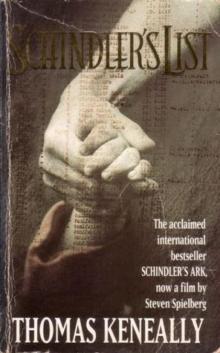 Schindler's List
Schindler's List Bring Larks and Heroes
Bring Larks and Heroes Australians: Flappers to Vietnam
Australians: Flappers to Vietnam The People's Train
The People's Train Crimes of the Father
Crimes of the Father A Family Madness
A Family Madness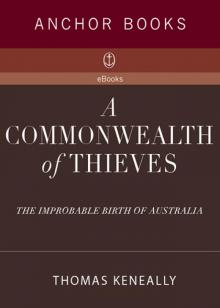 A Commonwealth of Thieves
A Commonwealth of Thieves Ned Kelly and the City of Bees
Ned Kelly and the City of Bees A River Town
A River Town Bettany's Book
Bettany's Book Blood Red, Sister Rose: A Novel of the Maid of Orleans
Blood Red, Sister Rose: A Novel of the Maid of Orleans Victim of the Aurora
Victim of the Aurora American Scoundrel American Scoundrel American Scoundrel
American Scoundrel American Scoundrel American Scoundrel Three Cheers for the Paraclete
Three Cheers for the Paraclete Australians: Origins to Eureka: 1
Australians: Origins to Eureka: 1 The Power Game
The Power Game The Chant Of Jimmie Blacksmith
The Chant Of Jimmie Blacksmith The Daughters of Mars
The Daughters of Mars Searching for Schindler
Searching for Schindler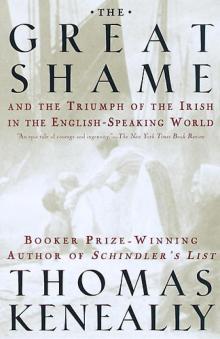 The Great Shame: And the Triumph of the Irish in the English-Speaking World
The Great Shame: And the Triumph of the Irish in the English-Speaking World Abraham Lincoln
Abraham Lincoln The Widow and Her Hero
The Widow and Her Hero Eureka to the Diggers
Eureka to the Diggers Shame and the Captives
Shame and the Captives The Survivor
The Survivor Jacko: The Great Intruder
Jacko: The Great Intruder The Book of Science and Antiquities
The Book of Science and Antiquities Homebush Boy
Homebush Boy The Playmaker
The Playmaker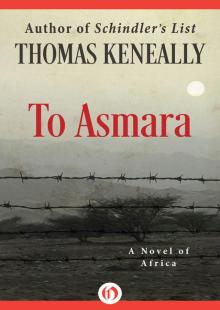 To Asmara: A Novel of Africa
To Asmara: A Novel of Africa A Woman of the Inner Sea
A Woman of the Inner Sea The Tyrant's Novel
The Tyrant's Novel Australians
Australians Schindler's Ark
Schindler's Ark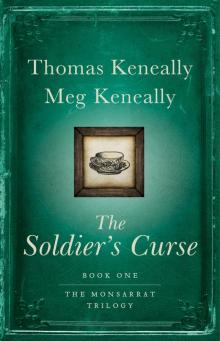 The Soldier's Curse
The Soldier's Curse Australians, Volume 3
Australians, Volume 3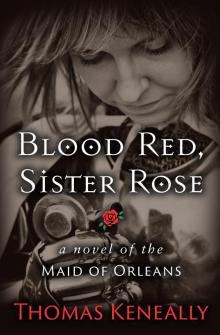 Blood Red, Sister Rose
Blood Red, Sister Rose A Victim of the Aurora
A Victim of the Aurora The Unmourned
The Unmourned Australians, Volume 2
Australians, Volume 2 To Asmara
To Asmara